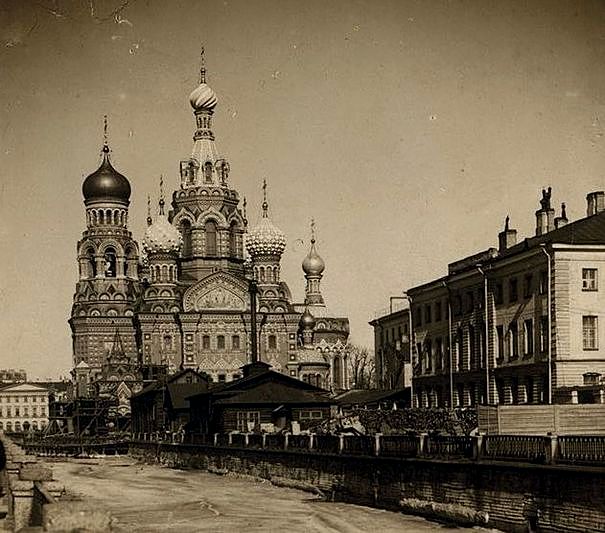St. Petersburg in the era of Nicholas II (1894-1917)
At the beginning of the twentieth century, Petersburg experienced an extraordinary building boom, due to the economic growth in the country as well as to developments in construction technology and improvements in communications between city districts.

The Petrograd Side was opened up for real estate development with the construction of Trinity Bridge, built by Nicholas II in memory of his father Alexander III and decorated with Alexander's monogram and that of the Empress Maria Fyodorovna. The bridge opened in 1903 in the presence of the Imperial family during the celebrations for the 200th anniversary of St. Petersburg. Not far from the bridge's access on the Petrograd Side, an elegant mansion was built for the famous ballerina Mathilde Kschessinska, who in had carried on an affair with Nicholas when he was still heir apparent. In Alexander Park, also on the Petrograd Side, a People's Cultural Center was built in honor of Nicholas II with a concert and a theatre hall and other entertainment possibilities. Renowned entertainers performed on its stage (such as the bass Fyodor Chalyapin), lectures were held with demonstrations of "hazy pictures" (slides), and films were also shown.

It was presumed that the Romanov Dynasty would rule over Russia indefinitely, and therefore, next to the Cathedral in the Peter and Paul Fortress, the Grand Ducal Burial Vault was built. Nearby, on the Petrovsky Embankment, the last Grand Ducal palace in the history of Russia was constructed: the Palace of Grand Duke Nikolay Nikolaevich the Younger. In connection with the increasing development of railway transport, the Finland Railway Bridge was built across the Neva and construction was begun on Palace Bridge near the Winter Palace.
Among the most striking architectural events of the era were a series of commercial structures along Nevsky Prospekt, including the splendid Singer Building, the Yeliseev Emporium, and the Wawelberg Bank Building. The turn of the 20th century saw the brief flowering of Art Nouveau and the distinctive Northern Moderne style of architecture, although the increasingly bellicose tone of the era was soon reflected in a transition to Russian Neoclassicism, of which some of the most prominent examples were the Azov-Don Bank Building next to Palace Square, and the Residential Building of the First Russian Insurance Company on the Petrograd Side.

In 1897, a census was taken: the population of Petersburg had reached 1,265,000 people, making it the third largest European capital after London and Paris. As befit the capital of a vast, multinational empire, the population of Petersburg was both ethnically and religiously very diverse. This was reflected in the first years of the 20th century with the construction of the St. Petersburg Mosque (not completed until 1920) and the Buddhist Datsan Gunzechoinei.
At the beginning of the twentieth century, forty newspapers and 140 magazines were published in the city, including those in foreign languages and in indigenous languages of the Russian Empire. Of course the city was a large cultural and artistic center, and the era of the 1910s became known as the Silver Age in Russian literature, the flower of which was the poetry of Alexander Blok.
In 1903, Nicholas II's government issued "Policy on Public Administration in St. Petersburg", regulating the activities of the local government. A number of important changes in the urban economy took place. In 1887 (under Alexander III) the first telephone station was built, but by 1895, there were already 3,000 subscribers in Petersburg and the surrounding area. In 1907, electric trams finally started running in Petersburg, which had been hindered earlier by the monopoly that horse-driven trams had on tram tracks in the city streets.
The memory of Nicholas II in Petersburg is honored in a new monument to Nicholas and Alexandra on Obdvodny Canal, No. 116, near the Church of the Resurrection of Christ.




